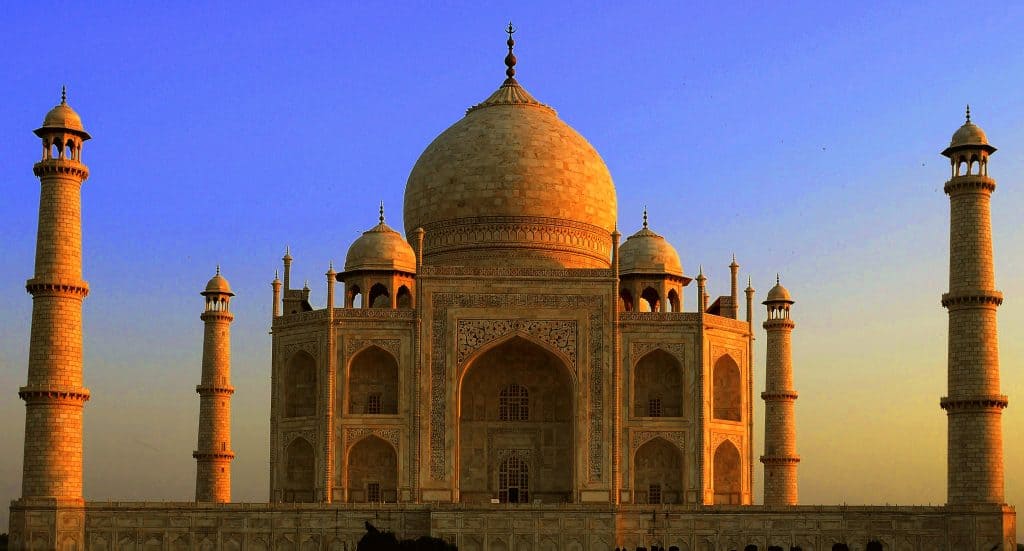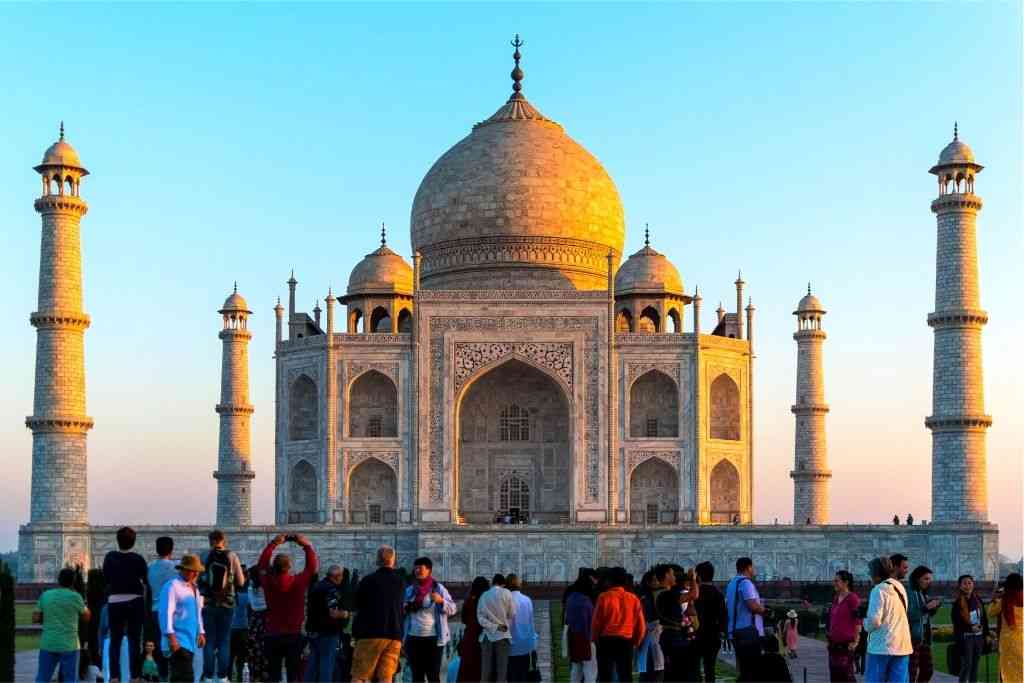THE TOP 10 MONUMENTS OF INDIA
The Taj Mahal , is an ivory-white marble mausoleum on the right bank of the river Yamuna in the Indian city of Agra. It was commissioned in 1632 by the Mughal emperor Shah Jahan (reigned from 1628 to 1658) to house the tomb of his favourite wife, Mumtaz Mahal; it also houses the tomb of Shah Jahan himself. The tomb is the centrepiece of a 17-hectare (42-acre) complex, which includes a mosque and a guest house, and is set in formal gardens bounded on three sides by a crenellated wall. Construction of the mausoleum was essentially completed in 1643, but work continued on other phases of the project for another 10 years. The Taj Mahal complex is believed to have been completed in its entirety in 1653 at a cost estimated at the time to be around 32 million rupees, which in 2020 would be approximately 70 billion rupees (about U.S. $956 million). The construction project employed some 20,000 artisans under the guidance of a board of architects led by the court architect to the emperor, Ustad Ahmad Lahauri. The Taj Mahal was designated as a UNESCO World Heritage Site in 1983 for being "the jewel of Muslim art in India and one of the universally admired masterpieces of the world's heritage". It is regarded by many as the best example of Mughal architecture and a symbol of India's rich history. The Taj Mahal attracts 7–8 million visitors a year and in 2007, it was declared a winner of the New 7 Wonders of the World (2000–2007) initiative.
For every hour of the day and for every climate condition the Taj has it’s on shading esteems, from the soft dreaminess at Sunrise and the tremendous whiteness at high noon to its chilly splendor in the moonlight, when the arch, thin of substance as the breeze, hangs, among the stars like a wonderful pearl, yet one of these results can be equivalent to those few fleeting moments when it assumes the enchanting tint of some soft, vibrant rose, solely illuminated by the brief Indian afterglow.
Different shades and changing colours of Taj mahal throughout the day:
Taj Mahal Before The Sunrise

When the first rays of the sun are ready to come to the tomb, before that time, some light is working to awaken the Taj Mahal and the night is dark on top of it. And it looks like a shadow which in itself is very quiet and magnificent.
Taj Mahal After The Sunrise
The best and wonderful time to visit the Taj Mahal is at Sunrise. At this time the Taj Mahal seems to be bathed in the redness of the sun. Not just because the morning light changes the dome of the Taj Mahal to soft, golden color, but also because it is the time when fewer and fewer tourists arrive, and if you arrive early, you get some perfect portraits too.
Some people like to see it from close and some people like to see the Taj Mahal from a distance, that the Taj Mahal appears to be light yellow and pink from far away when the morning sunrises.
Taj Mahal In the Afternoon

When the sun is on the head, the Taj Mahal appears quite white and bright. It is outstanding amongst other times to take brilliant bright pictures of the Taj Mahal, it seems quite white and magnificent at that time.
Don’t forget to carry an umbrella and a water bottle in summer time, especially in the month from (April-September).
Taj Mahal At Sunset

The Taj Mahal becomes just like the time of the sun rising in the morning. But at this time, the yellow color is spreading its unique hue on the Taj Mahal, which looks quite beautiful and cool.
This is the time that you want to take it in your eyes. And you can remember it throughout your life.
At this time, the Taj Mahal reduces considerably. And you can take a good and wonderful picture at this time. And keep them forever
Taj Mahal At Full Moon

On the full moon day, the Taj Mahal becomes very beautiful and charming. On this night, people come from far and wide to see the Taj Mahal and are fascinated by its enchanting beauty. This is the time when the moon can be seen talking to the Taj Mahal.
At night, the Taj Mahal opens every month 2 nights before and 2 nights after the full moon. If you want to see the Taj Mahal at night, then you have to take a ticket 1 day before full moon night.








I really like your word commands and your comprehension of the wonders.
ReplyDeleteKeep it up!
Would love to see more from you.